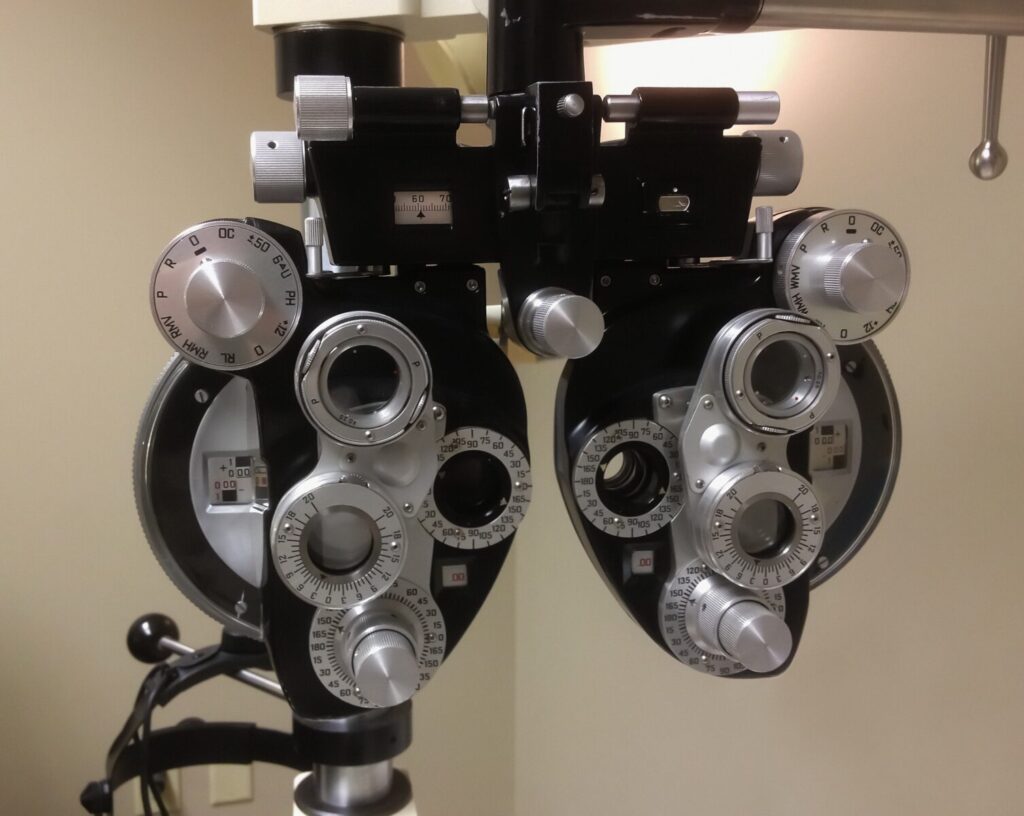In my last blog, I covered sarcopenia, or age-related muscle weakness, and how we can combat it as we get older. It is a major risk factor for falls, but many other factors also contribute to our risk for a fall as we age. Today we’ll take a look at some of those.
Medications
As we get older, we tend to take more medications. Some of those medications can have side effects that can increase your risk for a fall. Any medication that makes you tired, dizzy or lightheaded can lead to a fall. The more medications you take with one or more of those potential side effects, the more likely you are to experience them. In addition, the number of medications you take each day can impact your falls risk. People who take four or more prescription drugs daily (commonly referred to as polypharmacy) are known to be at higher risk for falls.
So, what can you do? Each time you are prescribed a new medication, be sure to read the information pamphlet that comes with it and note any side effects that might contribute to a fall. Some examples are fatigue, muscle weakness, dizziness, lightheadedness, drowsiness, low blood pressure and increased urination (more on this later).
Also, at least once a year, pack up all your medications and take them to a doctor’s appointment with you. Include everything: prescription drugs, over-the-counter drugs you take on a regular basis and vitamins and supplements. Yes, the actual bottles, not just a list. Do this for each doctor you see. Ask your doctors to review everything you take and confirm that you should still be taking each item, the dosage, and the frequency.
Why is it important to take the actual bottles rather than a list? A list can become outdated. If you carry your medication list around in your purse or wallet, it’s easy to forget to add something new that you start taking or remove something that you stopped taking. The items you take might change too. If you’re on autopilot at the grocery store and automatically grab the same brand of calcium that you always buy, you might not notice that the manufacturer changed the tablets from 1000 mg to 1500 mg. And if you didn’t notice, you won’t update your list to reflect the change. If your doctor looks at the actual bottle, though, he or she will see the dosage listed.
And why do this for each doctor? Why not just your primary care physician? Because, despite all the progress made with electronic medical records, many doctors have no idea what another doctor might have prescribed for you. So, you want to be sure that your primary doctor knows what your cardiologist has you taking and vice versa.
The bottom line is that the more medications you take every day, the greater your risk for a fall. You are the person who has to put the meds into your body every day and deal with any consequences – so be sure that you and all your doctors agree on what those medications should be.

Vision and Hearing Problems
Vision, sure. If you can’t see where you’re going, a fall seems like an obvious result. But hearing? Absolutely. Hearing loss contributes to risk for falls, especially among adults ages 40-69. One study concluded that a 25-decibel hearing loss tripled the risk for falls in this age group. (A 25-decibel hearing loss is the equivalent of going from normal to mild hearing loss.) This age group is at risk because that’s when hearing loss often starts to develop (so many people aren’t ready to deal with it) and they aren’t thinking about falls yet, so they aren’t taking precautions.
Also, hearing helps us balance. Hearing stable sounds around us acts as a sort of auditory anchor, helping us to know where we are in space. Aging affects both hearing and balance, a double whammy.
If you don’t have hearing loss yet, take steps to protect your hearing. Avoid loud noises and reduce your noise exposure. If you are going to a loud event, like a concert or indoor sporting event, wear earplugs to protect your ears. Ditto if any of your jobs or hobbies involve loud repetitive noises, like using power tools.
If you’re younger than 60, you don’t need to get your hearing tested unless you suspect you’re experiencing hearing loss, or you have a history of being exposed to loud noises. Your primary care physician should be checking your ears at each visit for any visible signs of ear problems, like lumps or build-up of ear wax. If you are having hearing loss and hearing aids are recommended for you, go for it. Many people shun hearing aids out of pride or embarrassment, but modern hearing aids are virtually unnoticeable and can even have cool functions like Bluetooth, allowing them to double as earbuds. If you are 60 or older, an annual hearing test is a good idea.
What about vision? Get your vision checked at least every other year, if not more frequently. Wear the appropriate corrective lenses. If your vision is poor, how will you avoid obstacles in your path or hazards that can cause a fall?
(If you’re struggling to schedule and organize your annual and preventive care visits, that’s something we could work on in a wellness coaching session.)

Bladder Problems
I promised I’d get back to “increased urination” and here it is. If you are a person who must rush to the bathroom or gets up at night to use the bathroom, you are at higher risk for falls. Any time we are rushing anywhere, we are at risk for falling. If you’re rushing to get to the bathroom, you’re in a serious hurry. Plus, there’s a danger of…shall we say…leakage, which means an additional risk of slipping. If you’re going to the bathroom overnight, rushing or not, wandering through darkened rooms is a fall risk. Many people experience urinary incontinence for a variety of reasons as we get older. Many of the reasons are treatable. Talk with your primary doctor, talk with a urologist. Ladies, find a urologist that specializes in women or try your gynecologist. Not every urinary condition requires medication or surgery so don’t rule out your doctor’s advice before you’ve asked for it.
In the meantime, make sure you have clear paths to your bathroom and a way to light your path at night, like a nightlight or a flashlight beside your bed.
This leads us directly into the most common cause of falling – home hazards. We’ll go over that in my next blog.
Thanks for being with me on this wellness journey. Go Bills!


[…] delightful!), you’ve learned that you need to (a) build strength to combat muscle loss and (b) reduce other risk factors that might apply to you. Your next task is to make your environment safer by eliminating some common home […]